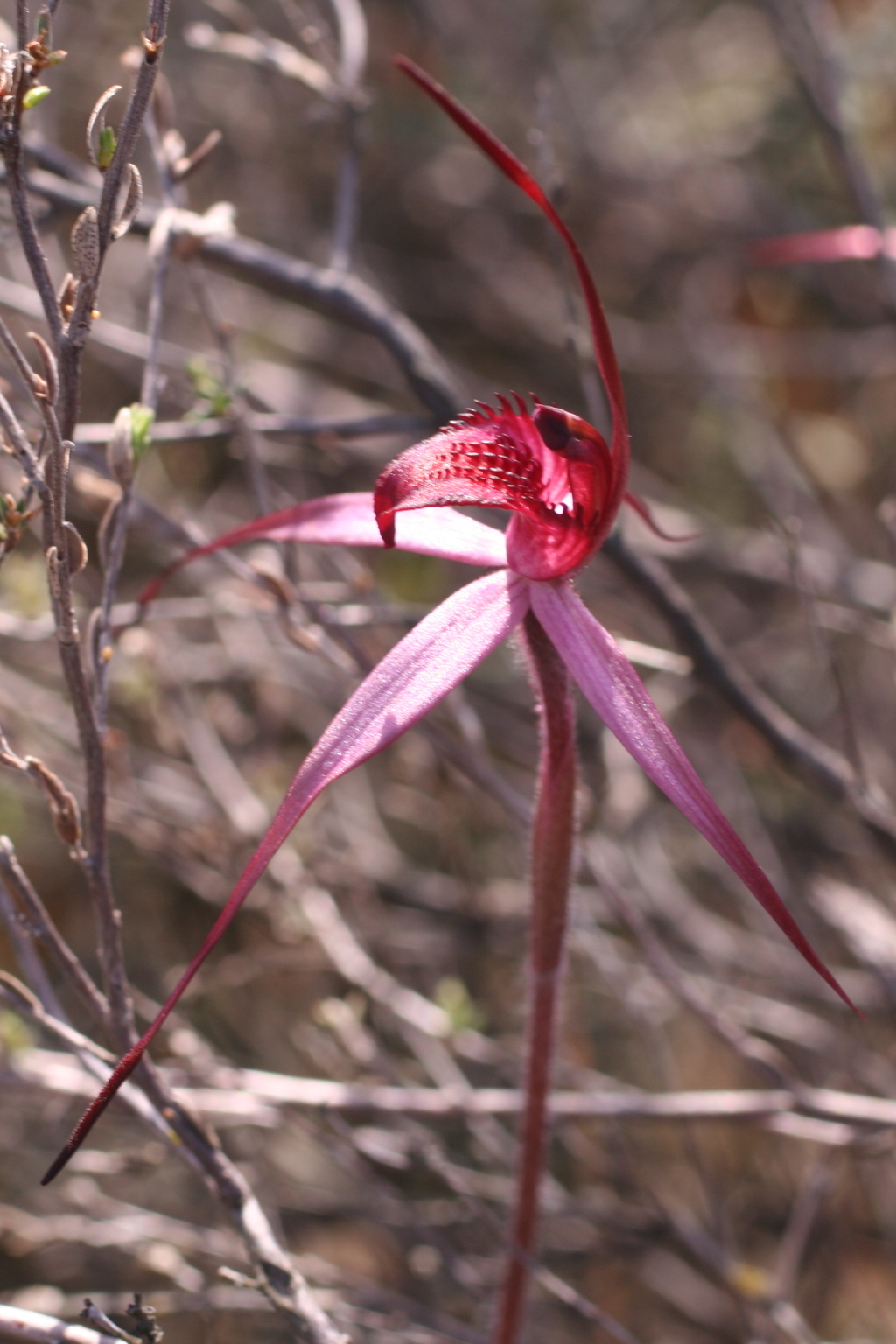Caladenia cruciformis
D.L.JonesFlowering plant 15–25 cm tall. Leaf 5–11 cm long, 3.5–6 mm wide, reddish at base. Flower solitary, fragrance resembling a hot motor; perianth segments 2.5–4 cm long, dark red to crimson, occasionally pink with darker red stripes, lateral sepals and petals stiffly spreading; dorsal sepal flattened at base, 1.5–2 mm wide, narrowed distally then terminated by a thickened dark red osmophore 6–15 mm long; lateral sepals 4–4.5 mm wide at base, narrowed distally then terminated by osmophores shorter than those of the dorsal sepal; petals shorter than sepals, lacking thickened osmophores. Labellum curved forward with apex recurved and lateral lobes erect, lamina ovate to ovate-lanceolate, obscurely 3-lobed, 10–14 mm long and 6–8 mm wide (when flattened), dark red, base whitish with red veins; margins of lateral lobes fringed with reddish linear calli c. 1 mm long, margins of mid-lobe with shorter calli becoming tooth-like and merging near tip; lamina calli mainly in 4 or 6 rows, extending nearly to labellum apex, narrow, linear to foot-shaped, c. 1.3 mm long at base of lamina, decreasing in size towards apex. Flowers Sep.–Oct.
Gold. Endemic to Victoria where known only from heathy open forests between Stuart Mill and Dalyenong in the western goldfields on sandy loams.
Although occurring in a conservation reserve, Caladenia cruciformis has a limited distributional range and is known from very few plants. It is regarded as endangered.
Caladenia cruciformis is part of the C. reticulata complex, and can be distinguished by the relatively large, dark red to crimson flowers with stiffly spreading, almost rigid, perianth segments that are arranged like a cross.
Hybrids with the sometimes sympatric C. cretacea have been observed.
 Spinning
Spinning

